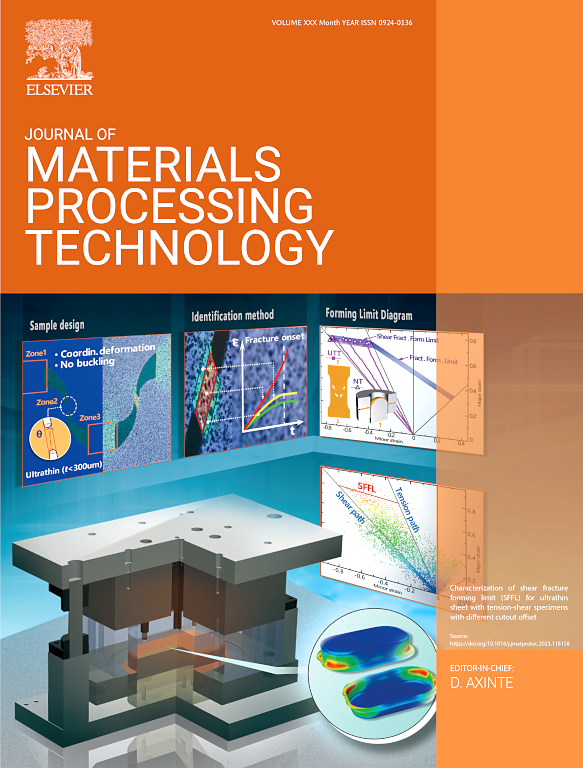Effect of UV-illumination on electrochemical anodic oxidation of SiC
IF 6.7
2区 材料科学
Q1 ENGINEERING, INDUSTRIAL
Journal of Materials Processing Technology
Pub Date : 2025-02-01
DOI:10.1016/j.jmatprotec.2024.118703
引用次数: 0
Abstract
Introducing an external energy field to force the oxidation of SiC is considered as an effective way to address the current challenge of chemical mechanical polishing (CMP) for SiC fabrication. In this study, we firstly compared several reported oxidation methods that have been used in different CMP-based techniques for SiC substrate, and demonstrated that the electrochemical (EC) and photoelectrochemical (PEC) anodic oxidations had significant advancement of the oxidation efficiency. Further comparison between EC and PEC revealed that PEC produced more uniform and smoother oxide layers in similar oxidation rates, while applied voltage and light intensity played a composing role in controlling the outcome. The quasi-in situ (photo)electrochemical atomic force microscopy analysis on the nanoindentation introduced artificial defects unraveled that, holes were prone to gather around the defective regions and resulted in faster oxidation rate, while the PEC can suppress such selective oxidation. These results suggest that the introduction of light has the potential to address the long-standing challenge of poor surface quality in electrochemical mechanical polishing (ECMP), not only for SiC but for various different semiconductor materials, and provide practical guidance for the industry to enhance PECMP performance on SiC and other hard and chemical inert semiconductor materials through optimizing oxidation processes.
求助全文
约1分钟内获得全文
求助全文
来源期刊

Journal of Materials Processing Technology
工程技术-材料科学:综合
CiteScore
12.60
自引率
4.80%
发文量
403
审稿时长
29 days
期刊介绍:
The Journal of Materials Processing Technology covers the processing techniques used in manufacturing components from metals and other materials. The journal aims to publish full research papers of original, significant and rigorous work and so to contribute to increased production efficiency and improved component performance.
Areas of interest to the journal include:
• Casting, forming and machining
• Additive processing and joining technologies
• The evolution of material properties under the specific conditions met in manufacturing processes
• Surface engineering when it relates specifically to a manufacturing process
• Design and behavior of equipment and tools.
 求助内容:
求助内容: 应助结果提醒方式:
应助结果提醒方式:


